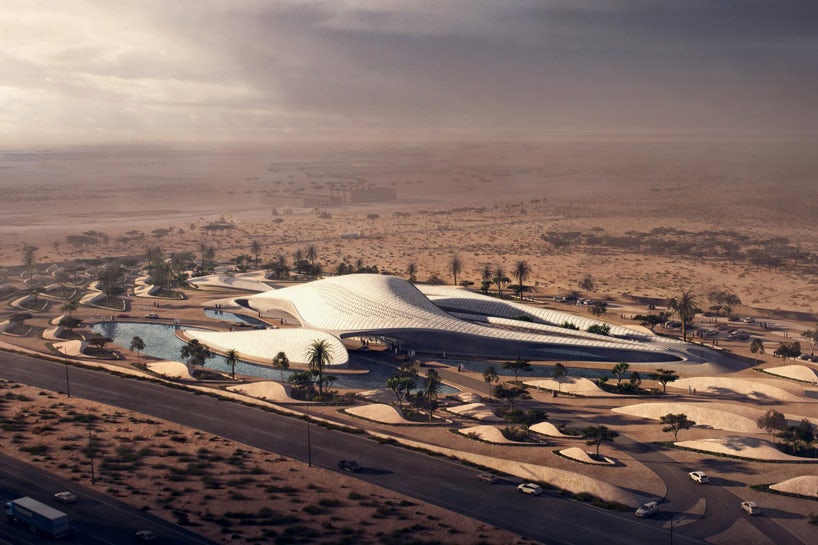
L: Google London headquarters by Allford Hall Monaghan Morris, via Dezeen; R: “Wang Family Ancestral Hall” by Ai Weiwei, via Designboom.
Google Searching (for a New Architect): Thomas Heatherwick is fast becoming Larry Page’s go-to architect. Following his collaboration with Bjarke Ingels on the Googleplex in Mountain View, rumor has it that the British designer has now been tasked with revamping the tech giant’s London headquarters. Has his firm really replaced Allford Hall Monaghan Morris as the main architect? We’re eagerly awaiting more details …
Where There’s Ai Will, There’s a Wei: After years of quasi-exile, architect and artist Ai Weiwei finally has a solo exhibition in his native China. On view across two galleries in the storied 798 Arts District, the large-scale installations include an ancient temple that has been dissected and reconstructed in two parts within the gallery space in Beijing.
Fostering Good Relations: Norman Foster has insisted he has no problem with developer Silverstein Properties or BIG after the Danish firm’s design for 2 World Trade Center replaced his own. The British architect is also adept at maintaining focus on his projects rather than architectural news on the internet — asked what he thought of the new design, he replied “I haven’t seen it yet.” (Bjarke, for his part, noted that, “I have only respect for Foster and their team.”)

Artificial Snow Cave, Emergency Shelter by Margot Krasojevic
Long Read
A Logical Successor?: One of Zaha Hadid’s protégés is beginning to make some parametric waves of her own with a radical new concept for a Himalayan shelter on the slopes of Annapurna II in Nepal. In a lengthy interview with ArchDaily, architect and psychologist Margot Krasojevic defends research and speculative work in the face of the “cavalier attitude that runs between academia and practice, or its chronic celebrity architect twitter-scape whipping self-admiration into a digital frenzy.” See more of Krasojevic’s Artificial Snow Cave, a carbon-fiber hut designed to serve as an emergency shelter, and other projects here.

L: “Porous City” by MVRDV; R: Abandoned Chinese Village. Photo by Zhou Jie, via CNN.
In Brief
Dream Job: For architects, this may just constitute your best career move (after being an architect, of course): the University of Cambridge is reportedly on the hunt for a Professor of LEGO. Competition for the position will undoubtedly be fierce, though it’s safe to assume that the job will entail more responsibility than building awesome structures from plastic bricks.
Lost World: If the overgrown remnants of Jurassic World sparked your imagination over the weekend, this real-life vision of abandoned architecture will send it overdrive: photos of a lost town in China, consumed by a tangle of vines, have been making rounds, proving that our appetite for ruin porn remains undiminished.
Recommended Viewing
“Like Drawing in Midair”: While it has yet to catch on at home, the bleeding edge of 3D printing continues to yield remarkable results. Working with research and development firm MX3D, designer Joris Laarman has unveiled a proposal to digitally fabricate a fully functional bridge in Amsterdam. Robots will print the steel structure and their own support rails as they inch across the canal — check out an introduction to the project below!
Image at top: Hydro-Electric Tidal House, by Margot Krasojevic.



